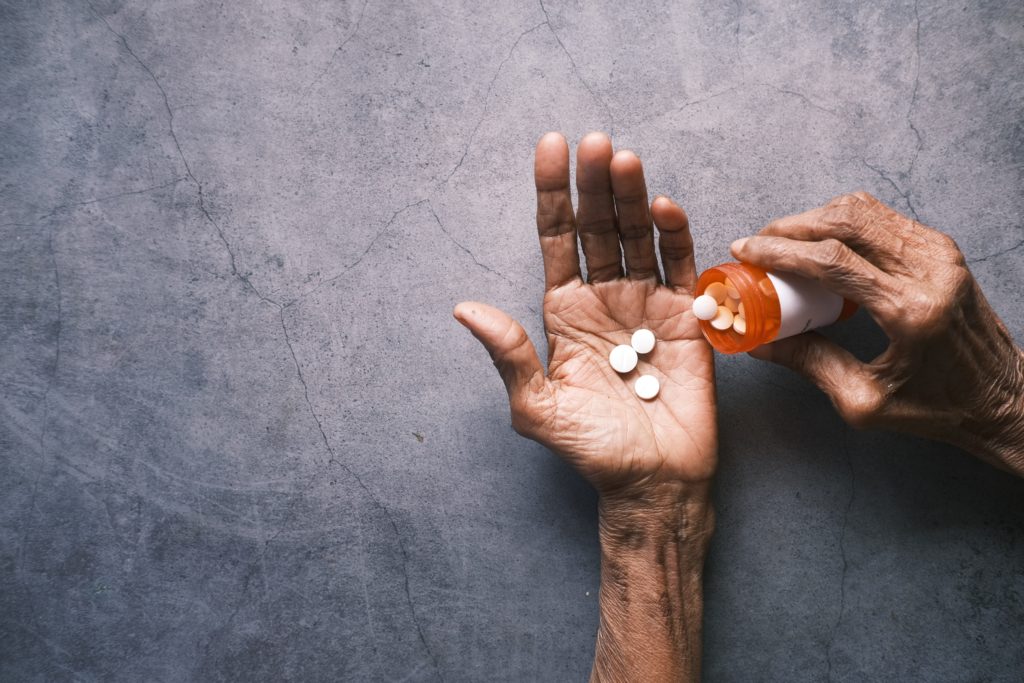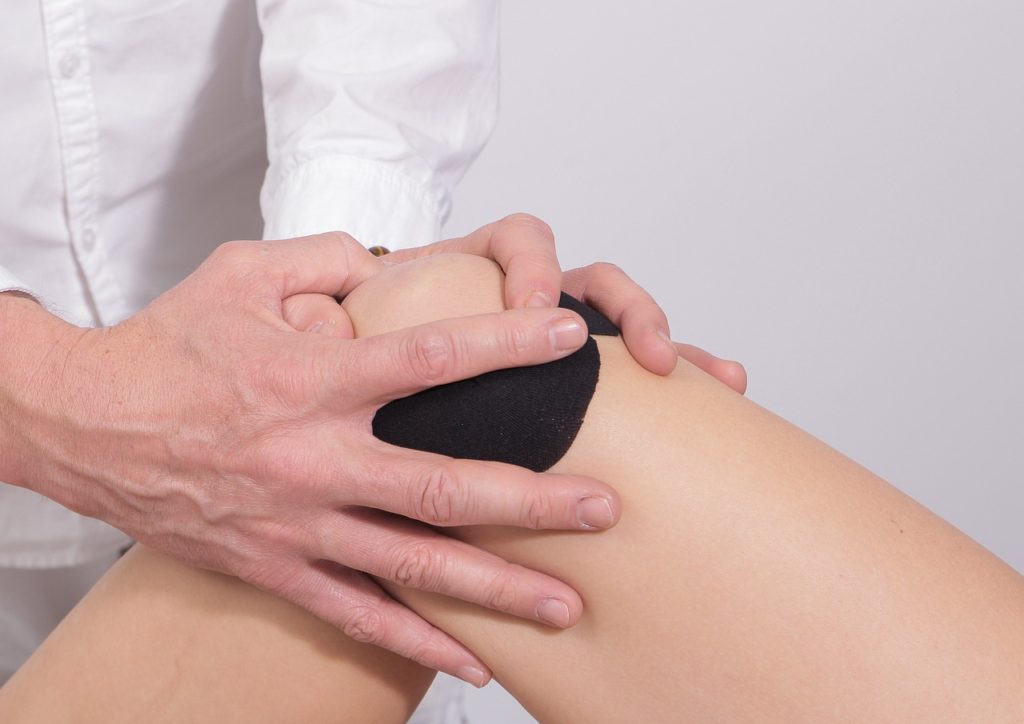How to Relieve and Treat Chronic Pain for Women 50 and Older
I open my eyes to see another day and still wish the pain to go away. I think to myself, “why am I stuck in this body suffering with chronic aches and pain that won’t go away?”
The chronic pain makes it impossible to go to a luncheon with my girlfriends or enjoy watching my grandkids play baseball because it is unbearable. How can I manage this when I don’t want to be addicted to painkillers?
Many women experience this mental battle within themselves and feel trapped in their crippling bodies. They may feel useless and disabled because of their chronic pain and are unsure about how to get relief. Turning to painkillers might not be the first choice, fearing addiction and the side effects they may cause.
What is chronic pain?
Chronic pain is defined as prolonged inflammation over three months. It is one of the most common causes of disability, and occurs whenever someone doesn’t heal from acute inflammation. It is a common, complex, and distressing problem, which has a significant impact on society and individuals. High-impact chronic pain means that a person is having pain daily or most days that limit daily activities.
The high number of pain and pain-related diseases are the leading cause of disability globally, according to a 2016 Global Burden of Disease Study. Socio-demographic, psychological, clinical, and biological factors are risk factors that play an important role in determining how to address someone’s problem.
Who is affected by chronic pain?
Fifty million people in the U.S. — 1 in 5 Americans — live with chronic pain, according to a 2018 study from the Centers for Disease Control and Prevention (CDC).
Additionally, of the nearly 50 million Americans with chronic pain, about 20 million have high-impact chronic pain, and 11.3 million of those are women, according to the CDC.
According to the American Society of Plastic Surgery, women have more facial nerve receptors increasing their pain sensitivity. They have an average of 34 nerve fibers per square centimeter of facial skin, while men only average 17 nerve fibers. Women are prone to suffer fractured bones because of osteopenia or osteoporosis (weakening of the bone) as they age. This can lead to malalignment of the bones, which can cause osteoarthritis over time. In addition, women experience pain psychologically differently than men and will talk about their pain more. Men are sometimes taught in childhood to be tough when experiencing pain.
Common joints affected by chronic pain
Chronic and acute pain can affect most parts of the body, but it can have severe effects on specific joints. These include:
- Tibiofemoral joint (knee)
- Spinal joints (facet joints and disc joints)
- Femoroacetabular joint (hip joint)
What are the long-term effects of chronic pain?
Suffering from acute pain does more than affect the body and mobility, it can have a profound impact on a person’s mood and overall quality of life. Some of the common long-term effects of chronic pain include:
- Depression
- Anxiety
- Fatigue or feeling overly tired
- Mood swings
- Insomnia
How to prevent chronic pain?
Is it possible to cure chronic pain? Unfortunately, no. But the good news is that there are plenty of ways to prevent the likeliness of chronic pain from occurring and reduce its severity when it is already present.
Tips for preventing chronic pain:
- Exercise regularly
- Establish good sleep habits
- Reduce stress
- Meditate
- Eat healthy whole foods
- Drink plenty of water
- Eliminate processed foods
- Reduce sugar intake
What do people commonly use to treat chronic pain?
Only 58 percent of patients say prescription painkillers effectively treat their pain, according to the American Academy of Pain Medicine. Many people take opioids to manage their pain. However, long-term opioid use has side effects, including constipation, respiratory depression, mental clouding, and nausea.
It can also become difficult for some to stop taking pain medication once they become physically dependent due to long-term usage. As a result, some people may attempt to manipulate the system to fill their prescription of opioids. In some cases, prescription drugs and opioids enter the community through families, pharmacies, medicine cabinet theft, robbery, and fraudulent prescriptions.
According to the United States Department of Justice, about 78 people die per day because of opioid overdose. At least 39,000 people will use opioids unrelated to their medical condition.
How to treat chronic pain naturally
There are several natural ways to treat pain and inflammation. Many herbs and supplements can provide relief, alongside diet and exercise. Talk to your healthcare provider or professional about using the following options for your specific treatment:
- Natural supplements (i.e. turmeric, tart cherry, or ginger)
- Cold/warm showers
- Cold/hot pack
- Daily stretching
- Exercise
- Yoga (i.e. deep stretching/yin yoga or gentle yoga)
- Massage (i.e. handheld device, chair massage, or professional massage)
- Transcutaneous electrical nerve stimulation (TENs unit)
- Foam rolling
- Cannabidiol (CBD) oil
How is chronic pain affecting your daily activities?
Persistent pain is the culprit that can lead to neck, low back, knee, or shoulder pain. Therefore, it impacts your day-to-day routine, such as gardening, washing your hair, scrubbing the bathroom, doing laundry, cleaning the kitchen, sleeping, cooking, and more. Also, it might affect your relationships with family and friends. Because of the unbearable pain, you may be unable to attend church, meetings, outings with your friends, luncheons, or family gatherings.
When you start to feel left out of the most meaningful events in your life, it could cause anxiety or depression. You feel hopeless because you don’t think it will get better since the pain has worsened. You might feel detrimental about losing your independence, but now you have to rely on others to help you.
Need more assistance with pain management? I can help!
I’ll enable you to restore your hope and strength within yourself to accomplish your goals. I help reduce your pain without using medication and coach you on choosing better food to help reduce your pain.
I’ll create a customized pain relief plan and motivate you to stay the course so you get the results you want. I’ll guide you to the appropriate healthcare provider if your problem is beyond my skills.
Let’s heal your body together! Schedule a FREE 30-minute pain relief assessment by clicking this link ? FREE 30-minute pain relief assessment.
Join my Facebook group women 50 & over stop battling chronic pain with medication.

